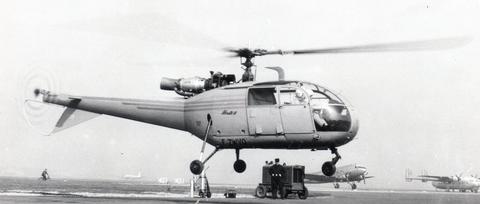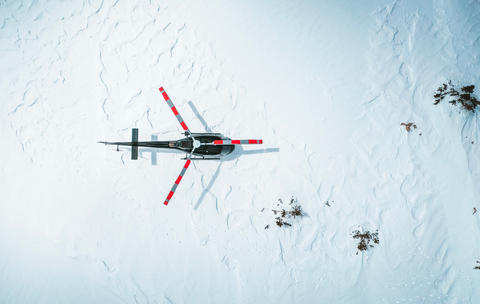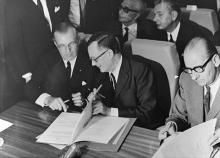Ludwig Bölkow worked with Messerschmitt until 1948 when he created his own design office. In 1956, he founded his own aeronautical company and later merged with Messerschmitt in 1968. The company went on to develop the famous hingeless rotorhead without lead-lag hinges and blades, made of composite material.
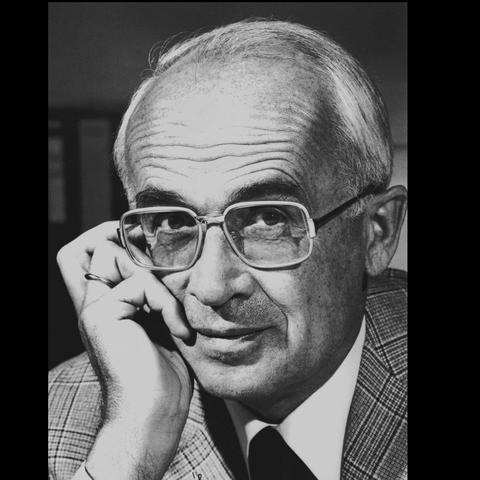
1950
SE3110: The SE3110 was the first truly French helicopter. It featured a 200 horsepower Salmson engine and a metallic hull structure with a long and slender tail with a double butterfly rotor at the tip. The structure, the rotors, the blades, and the mechanical components were designed by a team including René Mouille, the future Director of the Aerospatiale design office.
Jacques Lecarme flew the SE3110 for the first time on 10 June 1950. The rotors were very light and the aircraft difficult to fly.
In parallel, the development of the first Alouette, the SE3120 was launched.
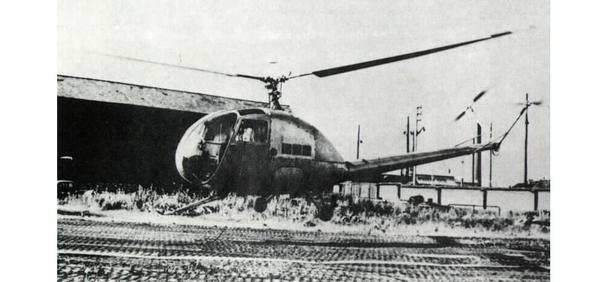
1950/1951
O1110 ARIEL II
The Ariel II version featured an enlarged rotor from the SO1100 (10.80 m) and a more powerful engine (takeoff power 190 horsepower). After several adjustments, Claude Dellys flew the SO1110 for the first time on 21 April 1950. A contract for two prototypes was then awarded by the French Air Ministry.
This twin-seat aircraft, with a maximum weight of 1,080 kg, was used as a flying test bench until 1952 and performed numerous public presentations. It demonstrated that the jet helicopter with combustion at the blade tips was a viable technology even if it was necessary to improve certain features.
SO1120 ARIEL III
Using the Turbomeca Artouste prototype gas turbine, generating 260 horsepower, and a hollow blade spar made of light alloy, the SO1120 Ariel III with three seats placed side-by-side had a total weight of 1,250 kg and an authorised speed of 135 km/h. Two prototypes were ordered and the maiden flight occurred on April 18, 1951.
SO1310 Farfadet
Despite its advantages, the fuel consumption of the Ariel III was approximately twice that of a helicopter with a mechanical transmission and the same engine. From this came the idea to operate as an autogyro during cruise flight and to reserve high consumption only for the takeoff and landing phases. This idea became the SO1310 Farfadet.
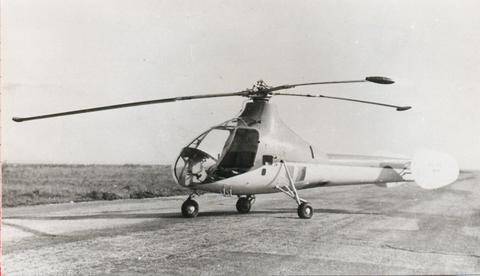
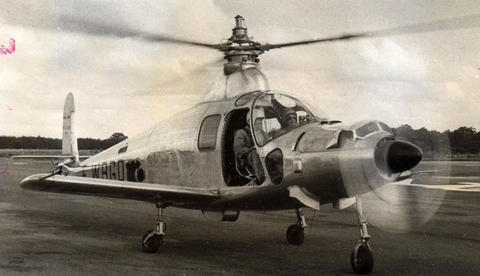
1953
SO1220 and SO1221 DJINN
During 1951, the French Official Services set up a programme for a light observation helicopter, which would show great ruggedness in operation. The experimental single seat SO1220 Djinn used the same hub and reduced diameter blades as the Ariel II with an empty weight of 280 kg.
The aircraft was very basic, with no windshield, no electrical installation, and a cyclic pitch control directly linked to the swash plate. In November 1953, the French Flight Test Centre took the two prototypes to Montgenèvre (1,800 m altitude in the Alps) for mountain tests.
On 29 December, Jean Dabos established the international altitude record for helicopters weighing less than 500 kg at takeoff. He reached 4,789 metres. Later on, in 1957, he beat the record in all categories reaching an altitude of 8,492 metres.
The twin-seat was called SO1221 Djinn. The first flight occurred on 16 December 1953, and a contract then followed for 25 pre-production aircraft. Because of the good results obtained, this batch was followed by production of 150 aircraft for the French Army (for training, observation and liaison purposes), and for civil and export customers.
The Djinn was then certified by French airworthiness authorities on 2 May 1957, becoming the first French helicopter -- and the only jet helicopter -- in the world to have reached the certification and industrial production stages.
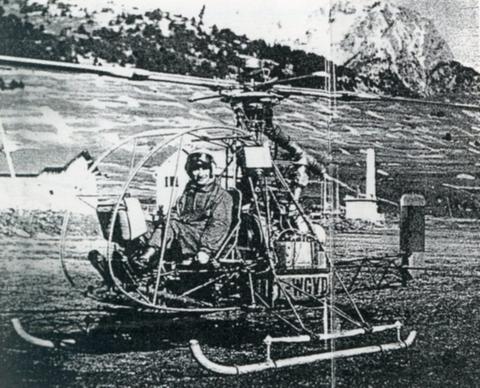
Bo102
In 1953, the German company Flettner, who at the time employed Mr. Bölkow, started developing a flight trainer, known as the Bo 102 Helitrainer. The trainer was in fact a "helicopter" secured to a platform on the ground. It was the first helicopter to be fitted with blades made of composite materials. In all, 18 of these machines were produced. Six countries purchased the trainer, which was the design reference for the Bo 103 - the very first helicopter produced by Bölkow Entwicklungen, founded in 1956.
Bo103
The Bo 103 took to the air for the first time on 14 September 1961. It was a single-seat machine and was not produced in series due to the lack of market prospects. But the knowhow acquired was put to use in the development of future Bölkow aircraft, and particularly for their rotors.
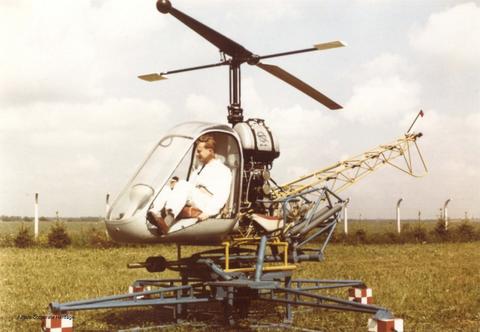
1955
SE3130 "Alouette II"
Charles Marchetti, head of the design office, decided to develop the SE3130 with a Turbomeca turbine. The Artouste II achieved 450 horsepower, but only 350 horsepower was utilised. The maiden flight occurred on 12 March 1955. Just two months later, 78 flights had been performed. On 6 June, Jean Boulet easily broke the international altitude record flying 8,209 metres in the second prototype.
The Alouette II was the first turbine helicopter to enter production. The first production SE 3130 was built in April 1956 and was used for an evaluation campaign in the Alps, only 13 months after the prototype's first flight. No such performance was ever achieved again.
On 3 July 1956, Jean Boulet and crewmember Henri Petit performed the first rescue by helicopter at 4,362 metres from the Vallot refuge at the Mont Blanc mountain. On 3 January 1957, Jean Boulet and Gérard Henry flying two Alouette II helicopters rescued the French Air Force crew and rescuers during operations following the famous accident of Vincendon and Henry. The exceptional capabilities of turbine helicopters compared to piston engine aircraft were thus demonstrated in a spectacular fashion. The Alouette II opened the way for a new generation of helicopters.
The production of the Alouette II ended in 1975 with more than 1,300 aircraft. The year 1966 saw the introduction of the SA318, a more powerful version powered by Turbomeca's Astazou engine, followed by the SA315 LAMA in 1969.

1956
Bo46
Beginning in 1956, Bölkow started work on a high-speed helicopter project with the development of a bearingless main rotor. The resulting helicopter, the experimental Bo 46, made its first flight with the new rotor system on 30 January 1964, powered by the French Turbomeca Turmo IIIb engine. Its designers hoped the helicopter would reach speeds close to 400 km/h. The rotor blades were made of composite materials. Two Bo 46 prototypes were built.
Although the engineers had to suspend the project because of oscillatory blade flapping problems, the experience gained was to prove extremely valuable in the subsequent development of other helicopters based on the same technology.
1957
Creation of Sud Aviation (SNCASO & SNCASE)
In 1957, Sud Aviation was born from the merger of SNCASE and SNCASO. The company achieved worldwide success with the first operational commercial jet in Europe, the Caravelle.
Soon after, Sud Aviation became famous for its helicopter division with Alouettes, Pumas and Gazelles. In 1967, Potez-Fouga joined the group.
1959
SA3160/ SA316/ SA319 B "Alouette III":
Encouraged by the success of the Alouette II – the very first turbine-powered helicopter to be produced in series – Sud Aviation went on to develop a more powerful and highly streamlined seven-seat machine with excellent visibility, capable of carrying two stretchers.
The Alouette III made its maiden flight on 28 February 1959 with Jean Boulet at the controls. The programme was managed by René Mouille. In June, the prototype landed at an altitude of over 4,000 m in the Mont Blanc range and, in October 1960, at over 6,000 m in the Himalayas. On board were the pilot Jean Boulet, two passengers, and 250 kg of equipment. The innovative feature of the helicopter was its gas turbine engine: the Artouste, rated originally at 880 horsepower, but derated to 550 horsepower. The version with the more powerful Astazou gas turbine engine made its first flight on 10 July 1967.
The first two customers of this version, which was certified on 15 December 1961, came from outside France, although the French Army placed an order for 50 Alouette IIIs in June 1961.
The Alouette III was specifically designed to fly at high altitudes and quickly earned a well-merited reputation for performing rescue missions. It was the first helicopter with a real multi-mission capability and performances matched to its missions, whether in its civil or military version.
Although the last and 1437th Alouette III left the Marignane assembly lines in 1979, close to 500 more were to be manufactured under license in Romania, India and Switzerland. The last Alouette III was delivered in 1985. Even today, there are still several dozen Alouette IIIs operating in about 30 countries.
In 1959, Sud Aviation developed a helicopter in the six metric-ton class, the Frelon (SA320). A distinguishing characteristic of the Frelon was its short tail boom in relation to the overall length of the airframe. The finalisation work on the aircraft proved to be very complex, and the Frelon programme was quickly abandoned to give way to a programme for a new, heavier machine - the Super Frelon (SA321). Two Frelon prototypes were built.
The programme was placed under the direction of Chief Engineer René Mouille, and on 7 December 1962, the SA321, a 13 metric-tonne helicopter with a rotor system based on American technology, performed its first flight. The flight crew was made up of Jean Boulet, Roland Coffignot, Jean Maris Besse and Joseph Turchini. In July of 1963, the helicopter broke three speed records for all categories combined, including the record for a 100 km closed course at a speed of 334.280 km/h.
The use of three turbine engines was a first in the industry. And the civil version, certified in October 1967, would be the first series-production helicopter of this type to receive certification. A Greek aviation company would use the aircraft in 1968 and 1969 to transport passengers between Athens and the Greek islands. When the Chinese purchased 13 machines, the country started to manufacture copies of the Super Frelon known as the Zhi 8 beginning in 1985. But the manufacturers of the SA321 deemed its profitability to be insufficient, thus shortening its career.
A total of 106 Super Frelons would be manufactured. The French Navy received the first military version of the helicopter in 1966, and several other countries placed orders. Unfortunately, four of the most important customers would encounter various problems and eventually be subjected to embargoes, and the helicopter would not have the illustrious career that had been hoped for. Production stopped in 1981.
